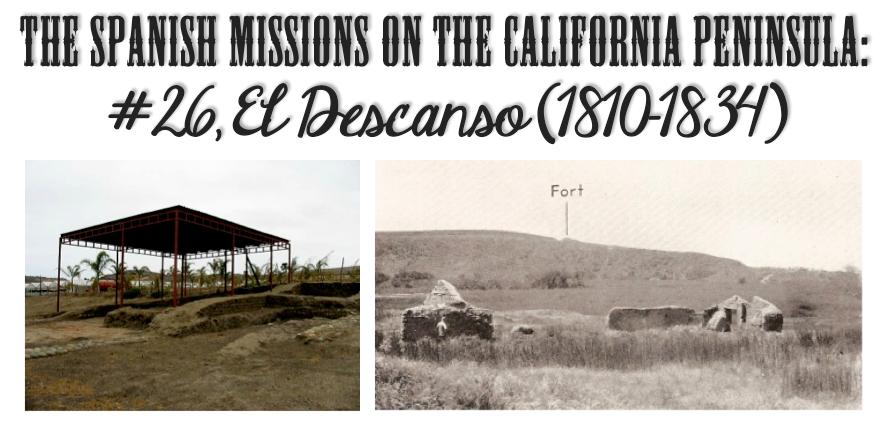
By David Kier
www.vivabaja.com
Co-author of ‘The Old Missions of Baja & Alta California, 1697-1834’
The history of El Descanso is told without the usual documentation available for most missions. From the few notes and letters that have survived, we know that Padre Tomás de Ahumada arrived to his new post at Mission San Miguel in mid 1809. Not long after his arrival, a flood devastated the mission’s fields. By 1810, Ahumada had relocated the mission to El Descanso, 8 miles north.
Perhaps the biggest question is if El Descanso is truly a separate mission at all, or just an alternate location for San Miguel. The mission was often called ‘San Miguel la Nueva’ (New San Miguel) by the Dominicans. San Miguel was always after called ‘Misión Vieja’ (Old Mission). Both locations were served by only one priest, and Spanish government officials had no input on this action by Ahumada. Mexico’s war of independence began in 1810, and the two Californias were without the typical support from Spain. While El Descanso is perhaps not technically a separate mission from San Miguel, it is considered such by Mexico’s INAH (National Institute of Anthropology and History) and many history writers. The following letter by Padre Ahumada (resident missionary of San Miguel between June, 1809 and February, 1815) provides the evidence for when mission activities were moved to El Descanso. The letter was written from San Miguel, indicating Ahumada returned to there. Perhaps he operated both locations simultaneously?
“This mission (San Miguel) lost its irrigable lands in some floods, when I had just recently come to it, and I moved the mission to Descanso, which is eight leagues to the north where there are some moist lands. This ground was located beside the Arroyo del Mogano, where wheat and barley are grown by dry farming with some abundance. I discovered a valley which I named Santo Domingo, where there is more than sufficient land for any kind of cultivation at any time of the year. A beautiful lagoon provides the moisture throughout the whole year, offering abundant soil suitable for growing corn and frijoles. There are a church and living quarters for all seasons of the year.
In San Marcos (to the east of San Miguel) one can direct at small cost a river of water which descends a nearby sierra and is lost in a sandy arroyo. It is the one that brought the above-mentioned flood to the ruined mission.
Fr. Ahumada.”
Ruins of Ahumada’s Descanso mission may be those now at a cemetery, overlooking the Descanso valley, from the south rim. Meigs identifies the location as a ‘fort’ since it commands a strategic location. It somewhat mirrors the placement of the San Miguel mission, which also is above and overlooking a valley, on its south side.
Padre Felix Caballero was the next Dominican assigned to San Miguel, starting in May, 1815. Caballero would remain in charge in northern Baja California for the next 24 years. By 1819, Caballero was also serving the needs of Mission Santa Catalina. Padre José Martínez was also at San Miguel from 1819 to 1822, and it is unknown how much time (if any) was spent at El Descanso. Unknown is the year Padre Caballero moved primary mission operations from Descanso (San Miguel la Nueva) back to San Miguel (Misión Vieja) or if both locations had equal status as one mission at two sites?
What is clear is that Padre Caballero reestablished El Descanso in 1830 with construction of new buildings. Caballero employed the gentile Indians of the tribe of Chief Jatiñil for the new construction. Caballero’s mission is in the valley on the north side of the arroyo. Three and a half miles up the valley from El Descanso was a mission orchard of some 20 acres. A 25 foot square reservoir next to a spring and a 500 yard long irrigation ditch was documented in 1927 by Peveril Meigs at this site. It is named La Viña after a huge grapevine there. In June of 1834, Caballero moved mission functions from both El Descanso and San Miguel some 15 miles east, to his new church of Nuestra Señora de Guadalupe.
In 1879, Manuel Clemente Rojo produced historical notes on activities in Baja California to replace documents destroyed during an 1843 rebellion in La Paz. One of these notes contains an interview with Chief Jatiñil in which he states he has been the chief since 1822. His father and grandfather were chiefs before him because command of the tribe has always been in the hands of his family, and that is why the tribe bears his name. He continues with, “I helped Father Caballero build Mission El Descanso from its foundation to the end”. Jatiñil also helped Caballero build Mission Guadalupe in 1834, but would later turn against the Dominican padre because the Jatiñil people were being forcibly baptized.
The boundary between the Dominican administration and Franciscan administration of California was first marked by Franciscan Padre Palóu in 1773 at the next valley just north of El Descanso, Arroyo el Médano. This was the first separation line of New and Old California (later called Upper and Lower California). However, California remained as one political unit until 1804. In 1788, Padre Sales moved the boundary line north to Arroyo Rosarito, and there it remained until the Mexican War ended in 1848 when Upper California became part of the United States and the line was moved even further north.
The mission walls had all eroded away by the 1950’s and a new church was constructed on the site. Many locals were not even aware of its existence in the 1960’s, according to history writer Choral Pepper who labeled Descanso as a ‘lost mission’. Foundation ruins were exposed in a 1997 archeological dig, and the site was partially covered by a steel awning.
The 1830 ruins are next to a church and are partially protected by an awning. Use the Free Ensenada Highway and take the road east by the lagoon and creek that goes under the toll highway, between Puerto Nuevo and Cantamar.

A 1927 photo by Peveril Meigs, looking south at the 1830 mission site showing the possible 1810 site identified as ‘Fort’, in the distance.
While El Descanso functioned as a mission, there is little doubt that it was only a new location for Mission San Miguel. The name was the location and never was a different saint given to it. It was New (La Nueva) San Miguel, at El Descanso. The history of the founding of all the California missions is fascinating as much as complex, read more in ‘The Old Missions of Baja and Alta California, 1697-1834’ by Max Kurillo, Erline Tuttle, and David Kier.
David Kier is co-author of ‘The Old Missions of Baja & Alta California, 1697-1834’. The book is available for purchase HERE or at the DBTC offices (call 800-727-2252).

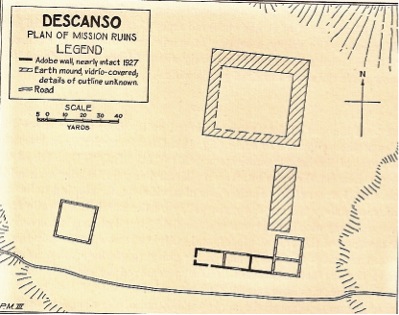
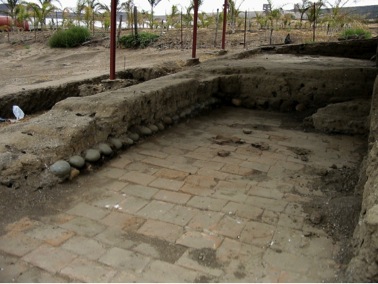
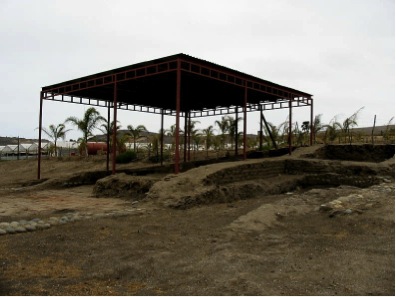

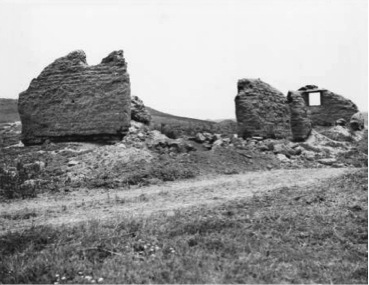

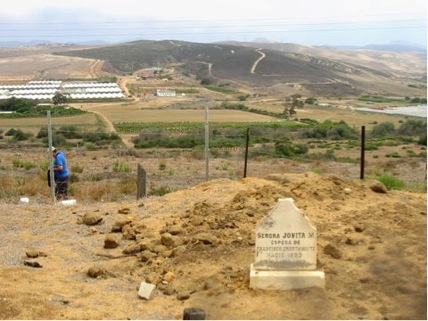
Great reading, I can’t wait for my next “mission” project with one of the grandkids, I feel that I can contribute a little more than their textbooks provide. JH